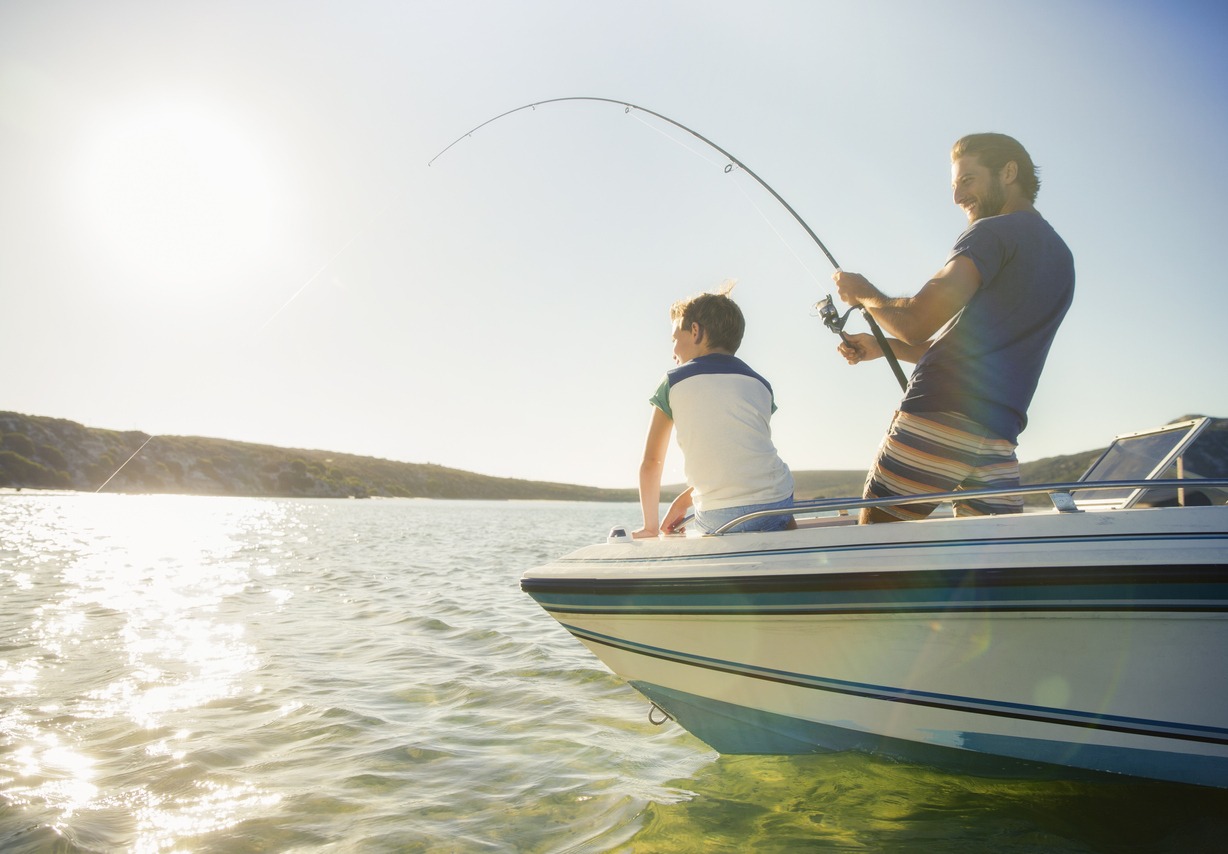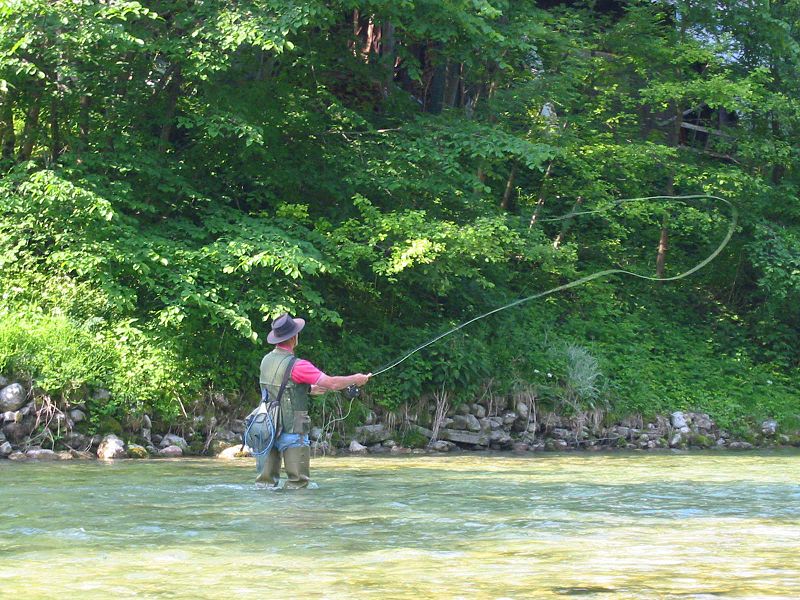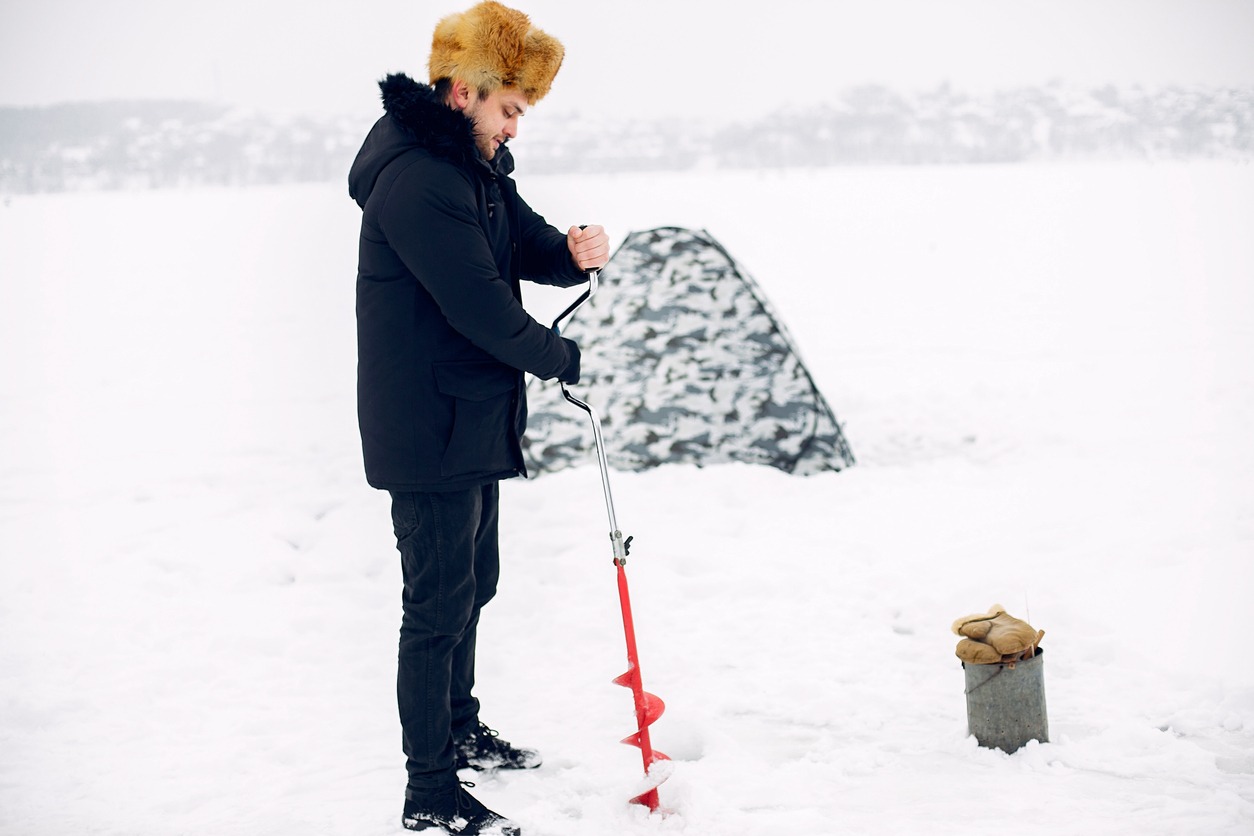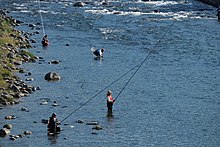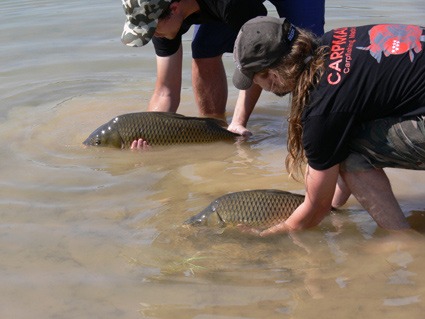Fishing is a recreational or commercial activity that involves catching fish from a body of water, either in the wild or from a farm or hatchery. There are many different types of fishing, and each type uses different techniques and equipment. Some common types of fishing include:
1. Fly Fishing
Fly fishing is a type of fishing that uses a fly rod, reel, and artificial flies to catch fish. The flies are designed to look like insects and are used to trick the fish into biting. Fly fishing is often used to catch species such as trout, bass, and salmon, and is a popular activity in many parts of the world. To do fly fishing, you’ll need a fly rod, reel, and a selection of flies. Then, you’ll cast the line out into the water and try to entice a fish to bite by gently moving the fly through the water. It can be a challenging but rewarding way to catch fish, and many people enjoy the peaceful, meditative nature of fly fishing.
2. Ice Fishing
Ice fishing is a fun and exciting way to fish in the wintertime when lakes and rivers are frozen. To do ice fishing, you’ll need to drill holes through the ice to access the water below. Then, you’ll use specialized ice fishing gear such as augers, rods, reels, and tip-ups to catch fish. Some common species that are caught when ice fishing include panfish, perch, and northern pike. When you do finally feel a tug on your line, it can be a thrill like no other! Ice fishing is a great way to spend a cold winter day, and it can be a fun activity to do with friends and family.
3. Ayu-Fishing
Ayu fishing is a traditional Japanese method of angling that has been around for centuries. It involves using long rods (usually 5 to 7 meters) and lures such as flies or decoy fish to catch ayu, which is a small, freshwater fish. Ayu is known for its territorial behavior and will often attack any bait that enters its territory. To catch these fish, you can use a fly, but you won’t be using fly-casting techniques. Instead, you’ll need to be patient and wait for the ayu to bite. Ayu fishing can be a fun and challenging way to fish, and it’s a great way to learn about and experience a piece of Japanese culture and history.
4. Catch-And-Release
Catch-and-release fishing is a practice that is intended to help conserve fish populations. It involves catching a fish and then releasing it back into the water, rather than keeping it for food or other purposes. This method was first introduced in the 1950s in Michigan as a way to reduce the cost of stocking hatchery-raised trout. Since then, it has been supported by both hobbyist anglers and conservationists as a way to prevent overfishing and protect endangered species. Catch-and-release fishing can be a fun and sustainable way to enjoy the sport of fishing, while also helping to preserve fish populations for future generations.
5. Live-Lining
This may be an effective fishing technique if you let your line just sink into a flowing body of water like a stream or river, and this is where the line becomes “alive”, and its “natural” movement could make an attraction for the fish.
6. Pole-Fishing
Another popular method of fishing is pole fishing and you can do this almost anywhere — streams, rivers, canals, and lakes, in freshwater or saltwater. It provides a degree of precision that can’t be achieved from rod and reel fishing. Poles come in different lengths (sometimes up to 18 meters) and some are incredibly durable.
The first and most important factor is the way you present the bait — you can make the float still, move left and right, up and down, with varying speeds — it is in control of the angler, while providing a higher level of accuracy. Since the bait is meant to attract fish under the tip of the pole, the hook is placed much more steadily around a small concentrated area of the feed.
The more tapered and elastic end of the pole provides something for the fish to fight or struggle. The ultra-lightedness of the rig, which the fish is trying to catch, makes the fish eventually tire out.
7. Spin-Casting
Spinning or spin fishing is a method where bait (particularly spinner bait) is cast in freshwater. Spinner bait is a lure with a metal “wing” which spins when it is in motion. The movement provides the spinner bait with varying degrees of glare, which is meant to attract the fish.
8. Night fishing
This type of fishing involves fishing during the night or in low-light conditions, often using specialized light sources such as lanterns or headlamps to attract fish. It is a popular method of fishing for species such as catfish, carp, and crappie.
9. Stream Fishing
This technique involves fishing in small streams or creeks, typically using lightweight rods and lines and small lures or flies to target species such as trout, bass, and panfish. It requires a delicate touch and precise casting to effectively fish in these narrow, fast-moving bodies of water.
10. Bank Fishing
It is a well-liked technique for catching fish including bass, catfish, and panfish, and it works in both freshwater and saltwater settings. Instead of fishing from a boat, bank fishing is done from the bank (the coastline) of a body of water.
| Fishing method | Best for |
| Fly fishing | Trout and other small freshwater fish |
| Ice fishing | Panfish perch, and other species that are active in colder water |
| Ayu fishing | Ayu and other small, freshwater fish native to East Asia |
| Catch and release | Sport fishing and conserving fish populations |
| Live to line | Attracting and catching larger predatory fish |
| Pole fishing | Small, freshwater fish |
| Spin casting | Largemouth bass and other larger freshwater fish |
| Night fishing | Catfish and other species that are more active at night |
| Stream fishing | Trout and other small, freshwater fish in streams or rivers. |
| Bank fishing | A variety of species, depending on the location and technique used |
FAQs
How to Start Fishing?
To start fishing, you will need to obtain the proper gear (fishing rod, reel, line, and bait or lures), a fishing license (if required in your area) and a good spot to fish (such as a lake, pond, or stream). You need to set up your gear, cast your line, wait for a bite, and then reel in your catch. If you are catch-and-release fishing, gently release the fish back into the water. If you are keeping the fish, handle it carefully and follow local regulations for size and catch limits.
What type of fishing is easy for beginners?
Spin casting is a good option for beginners because it is easy to learn and can be used to catch a variety of fish. It uses a reel and rod and is forgiving when it comes to mistakes in the casting motion.
What is the best bait to use?
The best bait to use will depend on the species of fish you are targeting and the conditions of the water. Some common types of bait include worms, minnows, crickets, and artificial lures. It can be helpful to ask local anglers or a fishing tackle shop for recommendations on the best bait to use in a particular area.
Conclusion
Many different types of fishing can be enjoyed by people of all ages and skill levels. From deep sea fishing and bait fishing, to spin fishing, fly fishing, and ice fishing, there is a type of fishing for everyone. It is important to choose the type of fishing that best suits your interests and abilities, follow all local regulations, and respect the environment. Whether you are a beginner or an experienced angler, there is always something new to learn and discover when you try fishing as a hobby.
